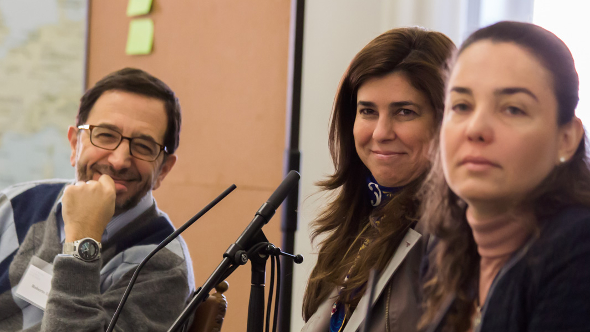Fellows review health care in Brazil, Peru and South Africa
The health community has tried a fresh approach to tackle intractable health problems, such as multi-drug resistant TB.
The story begins in Peru, where the government, with partners like the WHO got some funding to figure out a new approach. One of the ideas was to involve the community in helping patients with the intensive treatment regimen.
As the plans took off, the government took more ownership of this project and started investing heavily in TB. Community associations had now expanded across the country and, although TB is still prevalent in Peru, the situation is more hopeful.
The biggest lesson learned was that thorny problems could be tackled by building coalitions of stakeholders and relying on the strong support of the community. The lessons from Peru were more recently applied to South Africa, where the government was faced with an intractable TB problem in the gold mining industry, a problem that had persisted for almost 100 years.
Working with the South African government and the Stop TB Partnership, the World Bank convened a meeting of global TB experts and affected stakeholders. According to Vama Jele, General Secretary of the Swaziland Migrant Mineworkers Association, miners weren’t warned of the threat of infection, exposure to dust, and crowded living quarters, which all were contributors to high infection rates.
Jele noted, “There has been a huge improvement on legal frameworks and policies. Along with the development partners, we came up with this strategy for TB plan and supported the initiative of harmonizing treatment protocols.“If a miner suffers from TB he gets repatriated – and most people lose money, and so stop taking treatment and [are] likely to develop multi-drug resistant TB. Some stay home and die.
“Information is an issue and since we’ve started dialogues with workers, we’ve seen momentum in those seeking early treatment. In addition, there’s a labor agreement in the works between Swaziland and South Africa.”
One principle he recommends for success: “Follow the PANTHER (Participation, Accountability, Non- discrimination, Transparency, Human dignity, Empowerment and Rule of law).”
Citizen participation in health care is a hallmark of the Brazilian health care experience because citizen participation is institutionalized in health system. There is a law that defines citizen participation and it has three key parts: Integration of hierarchy of care, decentralization, and citizen participation.
The law in Brazil requires that each city – more than 5,000 municipalities – has to have a Health Council. Each state has to have a State Council, and at the national level – there is a National Council on Health.
These councils are structured so that half the councils are made up of members of the community, including patients and civil society. The councils, by law, approve health plans and are responsible for implementing the plan and the budget. Actually, the law defines as a functioning and well-working Health Council as one that decides transfers of budget from the national level.
Health Councils in Brazil have serious power and can fund decisions made by communities. According to Monica Vallone Esposito Marchi, Health Coordinator for Minas Gerais, “Despite being a law, it was really a group of people – students, workers, activists who put together the Brazil health movement during our 1986 national conference on health.
“In 1988 our national constitution recognized the right to health for everyone.“We plan what we want to every four years for health.
“Each state holds a conference and feeds their ideas into the national conference. This gives us the national direction for health.”


